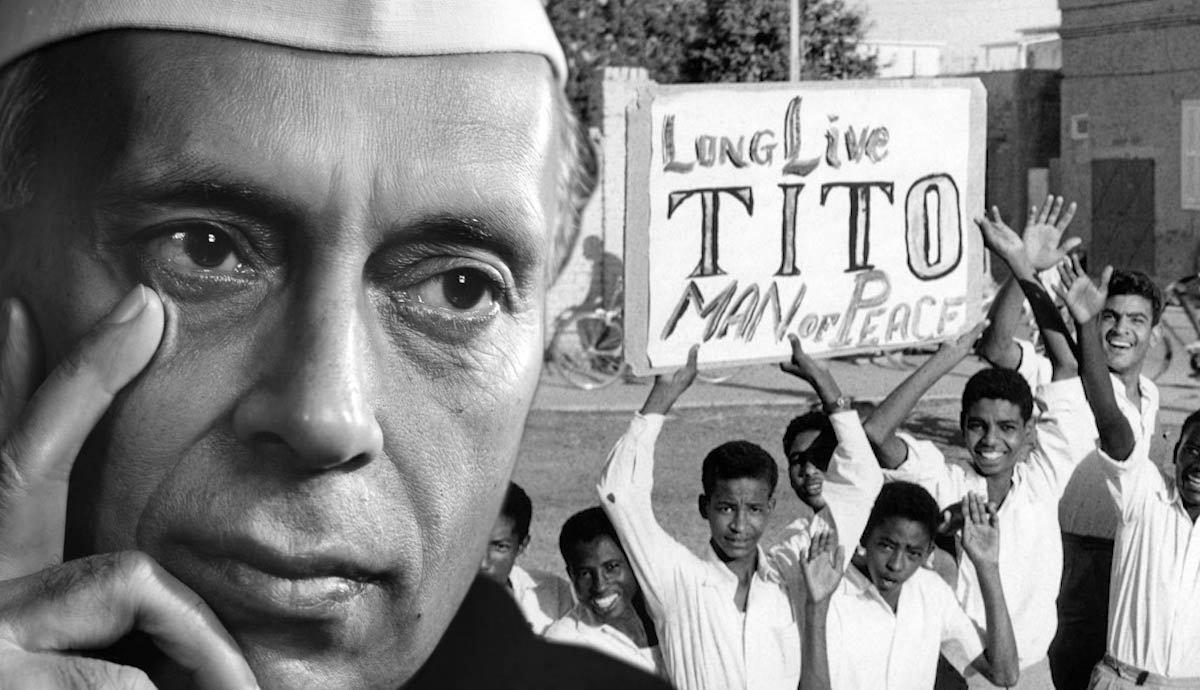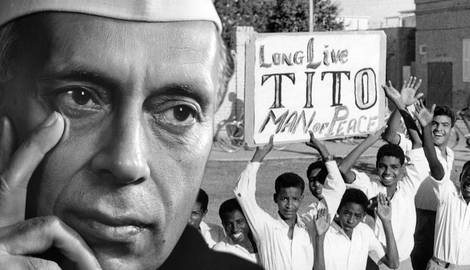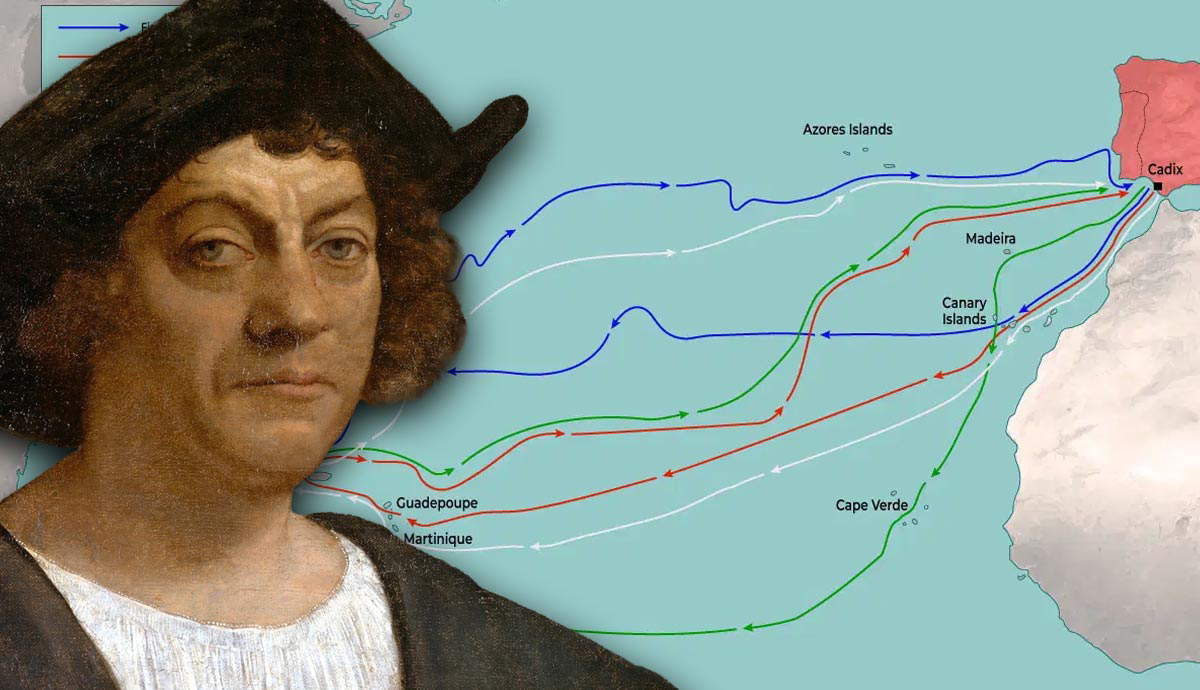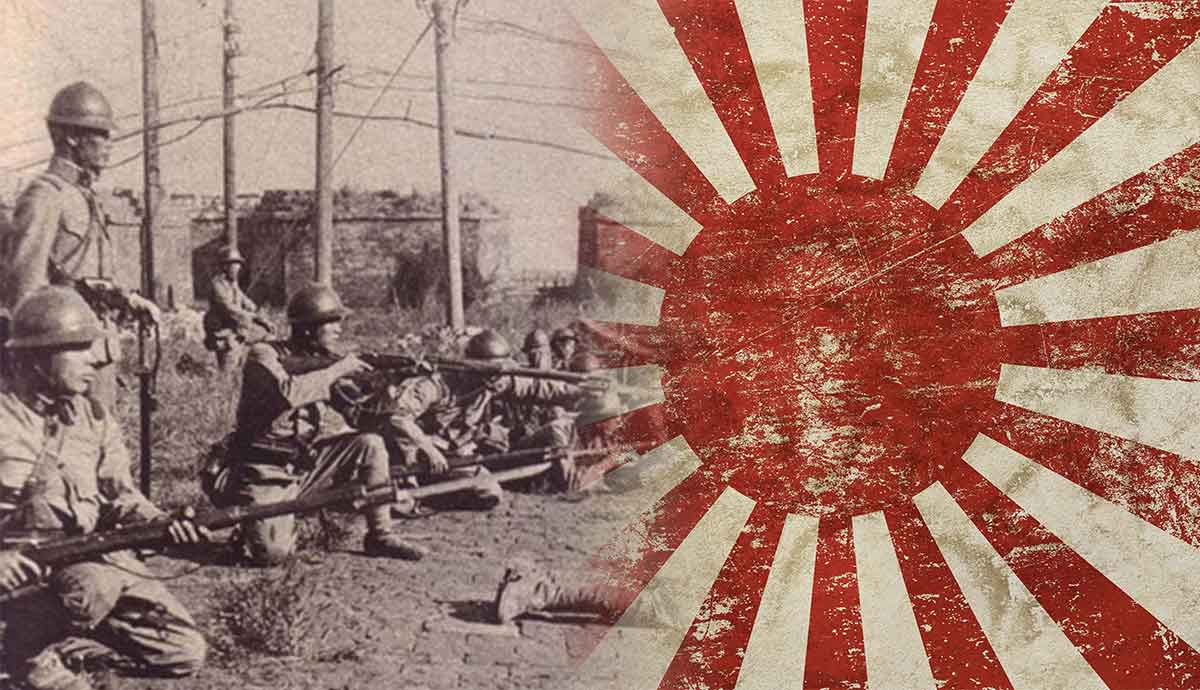
After World War II, Yugoslavia, Indonesia, and Egypt emerged as key states pursuing non-alignment policy. It intended to maintain the sovereignty of the newly independent nations by refusing to side with either the United States or the Soviet Union. Jawaharlal Nehru, the Indian Prime Minister, advocated South-South cooperation. Under Josip Broz Tito, Yugoslavia pursued a unique form of socialism independent of Soviet control. Indonesian leader Sukarno promoted anti-colonialism in Asia and Africa. Gamal Abdel Nasser, President of Egypt, advocated for Pan-Arabism, which significantly influenced Arab countries to pursue a non-aligned stance.
1. Yugoslavia

During the Cold War, Yugoslavia played a significant role in initiating and shaping non-alignment. Marshal Josip Broz Tito, the president of Yugoslavia, proved crucial in the Non-Aligned Movement’s successful formation.
Unlike other non-aligned states, Yugoslavia’s commitment to non-alignment was not influenced by decolonization or anti-imperial aspirations. It was the result of Tito’s unique vision of an independent, socialist Yugoslavia, albeit free from Soviet rule.
Yugoslavia acquired independence after the end of World War II, and Tito became the leader of the ruling Yugoslav Communist Party. Unexpectedly for the Soviet Union, Tito embraced “Titoism” as the dominant sociopolitical ideological framework for his control over Yugoslavia.
Aiming to assert Yugoslavia’s independence and safeguard it from falling into the Soviet sphere of influence, Titoism envisioned a break from Stalin’s oppressive policies. It sought to implement a more humane form of socialism, supporting cultural diversity, social justice, and political freedom. Titoism was dictated by the fact that Yugoslavia, as a united state, consisted of six different nations with distinct socio-cultural characteristics. According to Tito, maintaining peace, independence, and consolidating power in this diverse environment was only possible by following the principles of Titoism. The shift of Yugoslavia’s Communist Party from Soviet policies resulted in the Cominform Resolution in 1948, which expelled Yugoslavia from the Cominform, the Information Bureau of the Communist and Workers’ Parties.

According to Tito, joining the Western bloc would also undermine Yugoslavia’s independence. Instead, he promoted the idea of “positive neutrality,” which called for developing relations with both the Eastern and Western blocs while preserving their independence in external and internal affairs. Tito believed that non-alignment, as a newly emerging political concept, would enable Yugoslavia to assume a leadership role in world affairs, and its principle of non-interference in the affairs of other countries and non-participation in the military blocs of either the United States or the Soviet Union aligned with Titoism.
During the 1950 session of the United Nations General Assembly, the Foreign Minister of Yugoslavia, Edvard Kardeji, stated that “Yugoslavia cannot accept mankind choosing to be dominated by one power or another.” In a few years, on December 22, 1954, Tito met with the Indian Prime Minister, Jawaharlal Nehru, in Delhi and signed a joint agreement, formalizing a policy of collective peace through non-alignment. In September 1961, Yugoslavia hosted the first summit of the Non-Aligned Movement in the capital city of Belgrade.
Tito’s support for the establishment of the Non-Aligned Movement can be seen as a possibility to “exercise their sovereign right to freely choose their internal ways and their own way of socialist development.”
During the following years, Yugoslavia, under the leadership of Tito, became an active member of the United Nations Special Committee on the Situation with Regard to the Implementation of the Declaration on the Granting of Independence to Colonial Countries and Peoples, or the Special Committee on Decolonization, established in 1961. Within the committee, Yugoslavia actively called for working out recommendations on granting independence to the remaining colonies, especially colonies of the United Kingdom.
2. Indonesia

Indonesia represented a key state in the non-alignment during the Cold War. At the heart of the Indonesian non-alignment lies the policy of Bebas Aktif, established in the late 1940s. The policy dictated Indonesian commitment to the principles of independence and neutrality from competing superpower blocs, including abstaining from joining military alliances. The policy emerged as a result of nearly 300 years of Dutch colonial rule and Japanese occupation during World War II.
Indonesia’s strive for independence, which had already begun under Dutch colonial rule in the early 1940s, finally materialized after the end of World War II. The Indonesian independence movement, under the leadership of Kusno Sosrodihardjo (Sukarno) and Mohammad Hatta, proclaimed independence on August 17, 1945. The international community, however, did not directly acknowledge Indonesia’s sovereignty, as the Dutch government refused to recognize its former colony’s independence. The struggle for formal recognition of independence lasted until 1949. The Round Table Conference formally acknowledged Indonesia as an independent nation.

The vice president of the new Republic of Indonesia, Mohammad Hatta, declared on September 2, 1948, that the main foreign policy direction of Indonesia would be non-alignment as the single most effective tool to avoid involvement in a geopolitical conflict that might disturb national development.
Based on the previous historical experience of the struggle for independence, President Sukarno declared that he was willing to develop and support anti-colonialism and elaborate on a framework of an independent and active foreign policy course that would complement the Indonesian national revival without foreign commitments. These developments set the stage for the creation of the Non-Aligned Movement, which would also assist Indonesia in obtaining much-needed international recognition.

Indonesia was among the first countries to initiate and host one of the founding conferences of the Non-Aligned Movement. In 1955, the first Asian-African Conference was held in Bandung, Indonesia, widely known as the Bandung Conference. Twenty-nine participants, mainly newly independent states and former colonies of European empires, discussed the issues of decolonization, anti-imperialism, Cold War bipolarity, and the means to avoid alignment with one of the superpowers, which might have put their sovereignty at risk.
Sukarno, the president of Indonesia, was seen as a crucial actor in developing the non-alignment principles. Together with other influential leaders, including Jawaharlal Nehru of India, Gamal Abdel Nasser of Egypt, and Kwame Nkrumah of Ghana, he actively engaged in diplomatic discussions and laid the groundwork for the Non-Alignment Movement, which was formally founded in September 1961 at the first NAM summit in Belgrade, Yugoslavia.
3. India

India’s non-alignment during the Cold War was a result of its colonial past and struggles for independence. And just like other countries, upon gaining independence after the end of World War II, India’s foreign policy was determined to be free from great power dominance, economic dependence, and political manipulations.
India, and particularly its charismatic leader, Jawaharlal Nehru, played a decisive role in formulating the founding and governing principles of non-alignment. In April 1954, Nehru delivered a speech in Colombo, Sri Lanka, referring to Indo-China relations and their prospects. He defined five guiding principles, also known as Panchsheel, for such cooperation. The Panchsheel would become the cornerstone of the movement. The principles were:
- Mutual respect for each other’s territorial integrity and sovereignty;
- Mutual non-aggression;
- Mutual non-interference in domestic affairs;
- Equality and mutual benefit;
- Peaceful co-existence.
Smaller, newly independent states were significantly encouraged to join the movement by India’s public declaration of its commitment to non-alignment. As one of the founders and keen advocates of non-alignment, India under Nehru actively engaged in all summits and meetings of the NAM until the 1970s.
The mid-1970s saw a shift in Indian foreign policy towards the Soviet Union. The Soviet authorities provided significant military and financial aid to India and supported it during the Kashmir conflict with Pakistan and the Liberation War of Bangladesh in 1971. The shift made other states more vulnerable to falling under the influence of either the United States or the Soviet Union and resulted in the weakening of the movement as a whole.

The Sino-Indian War of 1967 and the two wars with Pakistan (1965 and 1971) escalated tensions between the South Asian countries of the NAM as well. For instance, Indonesia and Egypt opposed India and declared their support for Pakistan as they believed India only adhered to the non-alignment principles outside of its sphere of influence and not in the South Asian region, where it sought to establish dominance.
By the beginning of the 1980s, India’s prestige as a committed member of the NAM was already damaged. To reassert its leading role within the movement, India’s Prime Minister Indira Gandhi redirected the focus towards the economic development of the NAM members. In 1983, the Delhi Summit of the NAM was held in hopes of addressing the economic issues of less developed countries. The Summit did boost India’s influence. However, its support for the Soviet Union regarding the Soviet invasion of Afghanistan uncovered India’s pro-Soviet stance.
4. Egypt

Egypt was a pioneer in promoting the concept of non-alignment during the Cold War, and Gamal Abdel Nasser, the charismatic Egyptian revolutionary leader, played a crucial role in this endeavor. Even before the 1955 Bandung Conference, Nasser was one of the first to “begin to formulate in public statements a number of ideas, which he later called neutralism or non-alignment.”
Egypt had a long history of colonial rule, similar to other founding members of the Non-Aligned Movement. Throughout the 19th and 20th centuries, Egypt was ruled by the British Empire. Located in the Middle East, Egypt was rich in oil resources, which made it a strategic point for dominance between the United States and the Soviet Union. Non-alignment for Nasser meant safeguarding Egyptian sovereignty and avoiding foreign interference in Egypt’s affairs.
Nasser developed pan-Arabism as a concept of Afro-Asian solidarity. For Nasser, since most Arab countries shared a colonial past and were culturally, religiously, and linguistically close, they should be united to become free of Western domination. Pan-Arabism became an influential ideological tool in the hands of the Egyptian president, especially after the 1952 Egyptian revolution and Nasser’s consolidation of power. His ideas, based on Arab nationalism, anti-imperialism, and anti-colonialism, resonated with those of other newly independent African and Asian colonies, which sided with Egypt to oppose foreign dominance in the region.
Due to these developments, Egypt became the center of the Middle East rivalry between the United States and the Soviet Union. The Suez Crisis of 1956 confirmed Nasser’s belief that non-alignment was the only viable foreign policy path for former colonies.

The Suez Canal, situated in Egypt, held significant strategic value as a direct sea route connecting Europe and Asia. Israel, France, and Britain attempted to seize control of the Suez Canal in 1956. With the financial and military assistance of the two Cold War rivals, the United States and the Soviet Union, Egypt was able to resist successfully. The event strengthened Nasser’s belief that non-alignment offered Egypt flexibility and space for political maneuver.
In June 1961, Egypt hosted the preparatory meeting of the NAM Summit in Cairo, and in October 1964, the Second Summit was held with 47 participants.
Following Nasser’s death in 1970, Egypt remained an active member of the Non-Aligned Movement, with a changed foreign policy course, however. Unlike Nasser’s reactionary policies, the new leader of Egypt, Anwar Sadat, chose a more pragmatic course. He signed the peace deal with Israel. The Camp David Accords of 1978 were viewed as Egypt’s shift from its traditional non-aligned policy.










